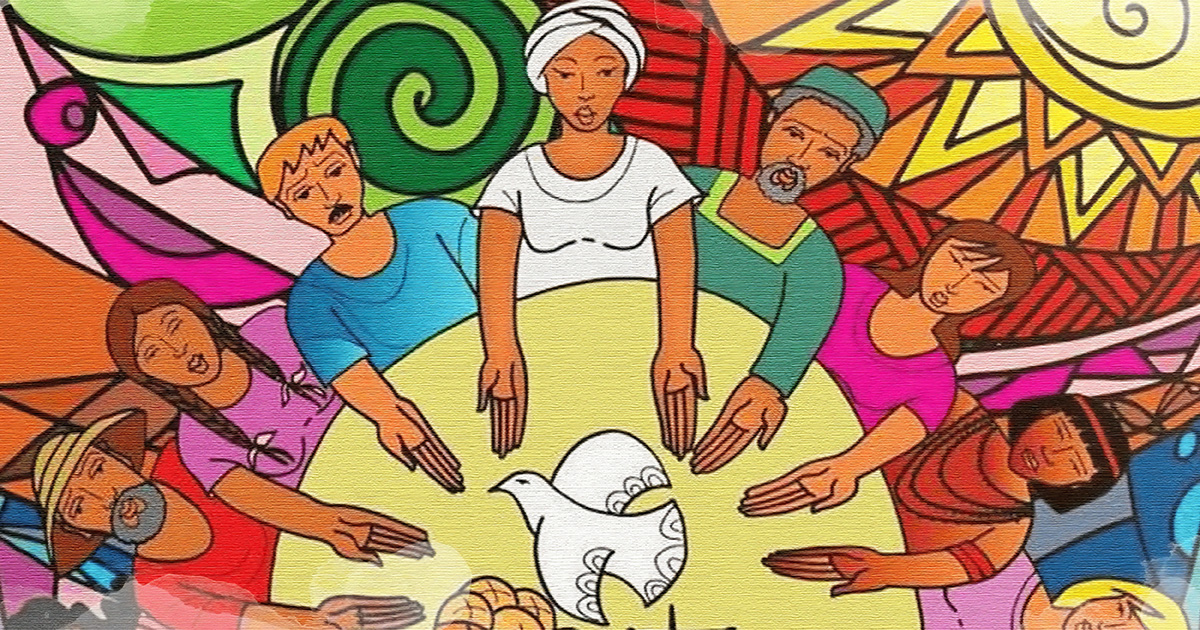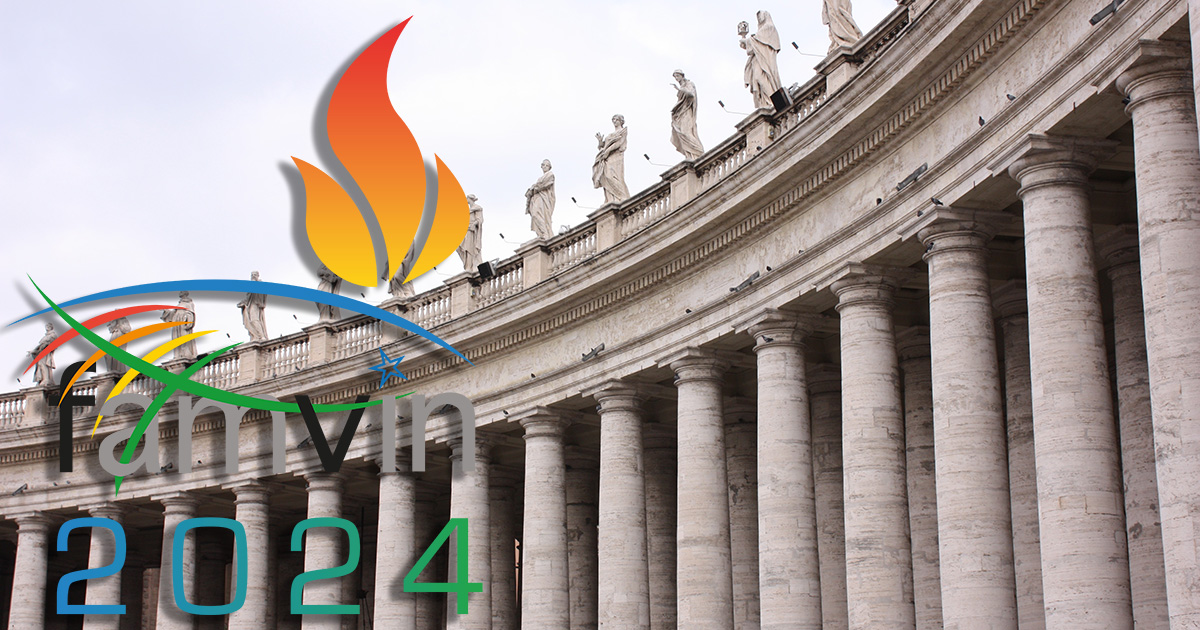Synodality in the Catholic Church refers to a style of living and institutional functioning that reflects a form of communion and cooperation within the ecclesial community. Synodality is expressed through events such as synods and councils, which operate at local, regional, and universal levels. Although awareness of synodality has grown recently, it has been an essential characteristic of the Church from its beginnings, adapting and evolving throughout history. This article examines synodality through the centuries, highlighting its development and transformations from the first millennium to the contemporary context.
1. Synodality in the First Millennium
1.1 Early Centuries
In the early centuries of Christianity, synodality was expressed in the cooperation and dialogue among different levels of ecclesiastical leadership. In the patristic era (1st-5th centuries), figures like Ignatius of Antioch and Cyprian of Carthage promoted the idea of a church that acts together, emphasizing the participation of bishops, priests, and the community of believers in decision-making. Ignatius of Antioch described the community as “fellow travelers,” highlighting the importance of communion and collaboration. Cyprian of Carthage argued that decisions in the local church required the consensus of both the bishop and the priests, as well as the laity. Eusebius of Caesarea and John Chrysostom also underscored the synodal nature of the Church, considering it a process of “walking together.”
1.2 Fall of the Roman Empire
The fall of the Roman Empire in 476 AD led to a greater centralization of authority in the Bishop of Rome, who began to assume a role of universal leadership. During this period, Pope Leo the Great played a key role in preserving the integrity of the Church in the West. However, synodality did not disappear; the Councils of Nicaea (325) and Constantinople (381) continued to recognize the regional authority of various sees, with the Bishop of Rome and other significant ecclesiastical centers playing prominent roles.
1.3 Classification of Councils
Ancient councils were classified according to their ecclesiastical scope, including ecumenical, general, extra-territorial, patriarchal, plenary, and provincial councils. In the 6th century, diocesan synods began to gain importance due to the expansion of the Church into rural areas. The synods of Auxerre and Autun in France were among the first significant examples of this evolution.
1.4 Medieval Expansion
During the first half of the Middle Ages, the expansion of Christianity under the Carolingian Empire led to a greater institutionalization of diocesan synods, which included priests, abbots, and deans. The synods of Ratisbon and Frankfurt, for example, reflected a synodal system that helped integrate new communities within the ecclesiastical and doctrinal framework of the Church.
In the Visigothic Iberian Peninsula, the Toledan Councils (6th-8th centuries) played a significant role, convened by the king and addressing both ecclesiastical and civil matters. These assemblies influenced the structure and authority of later councils, including the Vatican Council II.
2. Changes in the Church’s Configuration in the Second Millennium
2.1 The Reconfiguration of the Western Church
During the second millennium, the Western Church became centered around the See of Rome, intensifying papal authority and creating a more hierarchical structure. The Gregorian Reform and the establishment of the cardinalate played crucial roles in this centralization, increasing papal control but reducing the autonomy of the episcopate and local synodality. Centralization was facilitated by the unifying heritage of the popes of the Roman Empire, transforming the Church into a more hierarchical and less synodal entity compared to its past.
2.2 Synodal Life in Religious Orders and Cathedral Chapters
Despite centralization, synodal life persisted in religious orders and cathedral chapters. Monastic orders, following the Rule of Saint Benedict, maintained synodal practices in their daily meetings. The Crusades and the rise of the lay movement in the 12th century also promoted a synodal dimension in ecclesiastical life, with confraternities and penitential orders combining monastic ideals with pastoral activity.
2.3 Between the Appreciation of Conciliarity and the Risk of Conciliarism
During the Western Schism, tensions arose between the papacy and conciliar aspirations. Conrad von Gelnhausen defended conciliarism, which proposed that the council should have supreme authority in the Church, rather than the pope. Although this movement sought to resolve the Schism, it also reflected a persistent tension between papal centralization and conciliar authority.
3. Synodality from the Council of Trent to the Threshold of the 20th Century
3.1 Historical Context and Lutheran Reformation
The definitive return of the popes to Rome in 1420 marked an era of strengthening the papacy against conciliarism. The Lutheran Reformation, initiated in 1517, challenged papal authority and called for a return to older Christian traditions, contributing to the growing tension between internal reforms and external challenges.
3.2 The Council of Trent (1545-1563)
The Council of Trent was a key response to the Lutheran Reformation, consolidating Catholic doctrine and promoting reforms in the Church. The council established the need for provincial councils and diocesan synods to implement Catholic reforms in different regions. The Tridentine reform reaffirmed the importance of tradition and the sacraments, and mechanisms of doctrinal control such as the Sanctum Officium and the index of prohibited books were instituted.
3.3 Instruments of Control and Doctrinal Reaffirmation
Following the Council of Trent, the Church implemented several measures to ensure orthodoxy, including the reform of the Curia, the promulgation of the Roman Catechism, and the codification of the liturgy in the Roman Missal. These reforms were essential in maintaining the doctrinal and administrative unity of the Church.
3.4 Role of New Religious Orders
New religious orders, such as the Jesuits, played a crucial role in spreading the Tridentine reform. Founded in 1534, the Society of Jesus was characterized by its obedience to the pope and its focus on education and mission, supporting the reform and control of orthodoxy.
3.5 Decrease in Synodal Life
From the 18th century onwards, synodal life decreased due to new political ideas and state interference in ecclesiastical affairs. The influence of absolute monarchies and regalism led to greater centralization and reduced synodal participation in decision-making.
3.6 Influence of Absolute Monarchies
In Latin America, the arrival of the Bourbons and the creation of new viceroyalties reflected the trend toward greater ecclesiastical centralization, with the state controlling councils and synods. This trend was influenced by thinkers like Jacques Bossuet, who defended the absolute authority of the monarch.
3.7 The First Vatican Council (1869-1870)
The First Vatican Council, convened by Pope Pius IX, addressed doctrinal and political issues, including papal infallibility. This council reflected an effort to reaffirm papal authority in response to the challenges of modernity and rationalism.
4. The Tradition of Synodality in Latin America and Its Evolution Over Time
4.1 Origins and Initial Development
From its beginnings, the Church in Latin America maintained a tradition of synodality, with significant decisions being made in ecclesiastical assemblies. Although American bishops did not participate in the Council of Trent, the first American ecclesiastical assemblies adopted a more horizontal approach to decision-making. Provincial councils and diocesan synods in Latin America played an important role in organizing the Church and the colonial administration.
4.2 The Latin American Plenary Council and the Creation of CELAM
The Latin American Plenary Council of 1899 was a crucial point in the evolution of synodality in the region, establishing greater coordination among Latin American churches. The creation of CELAM in 1955 promoted greater collegiality and cooperation among the continent’s episcopal conferences, reflecting a commitment to synodality and dialogue in the Latin American context.
5. Synodality in the Contemporary Context
5.1 The Convocation of the Second Vatican Council
The Second Vatican Council, convened by Pope John XXIII, marked a turning point in the life of the Church, promoting a renewed vision of synodality. The council reaffirmed the importance of dialogue and participation in ecclesiastical decision-making, paving the way for greater involvement of laypeople and a more inclusive understanding of the role of the episcopate.
5.2 Synodality in the Post-Vatican II Church
After the Second Vatican Council, synodality became a central feature of ecclesial life, with an increased emphasis on participation and collaboration at all levels of the Church. The implementation of conciliar reforms has led to greater openness and dialogue within the Church, reflecting the spirit of walking together toward greater communion and unity.
5.3 Contemporary Synods and Synodality in Action
Contemporary synods, such as the Synod of Bishops, continue to promote synodality in the Church. These synods address relevant issues for the Church’s life in the modern world and encourage active participation of bishops, priests, and laity in decision-making. The experience of recent synods shows a renewed commitment to the synodal lifestyle, seeking greater integration and collaboration in ecclesiastical life.
Conclusion
Synodality has been a fundamental characteristic of the Catholic Church from its origins, evolving from the early centuries to the contemporary context. Throughout history, synodality has reflected the Church’s desire to walk together in faith, adapting to the challenges and needs of each era.
Abstract of an article by Federico Tavelli, researcher in Medieval and Modern Church History at the Albert-Ludwig University of Freiburg (Germany), published in Revista Teología of the Faculty of Theology of the Pontifical Catholic University of Argentina, volume LIX, no. 139, December 2022, pp. 169-191.







0 Comments